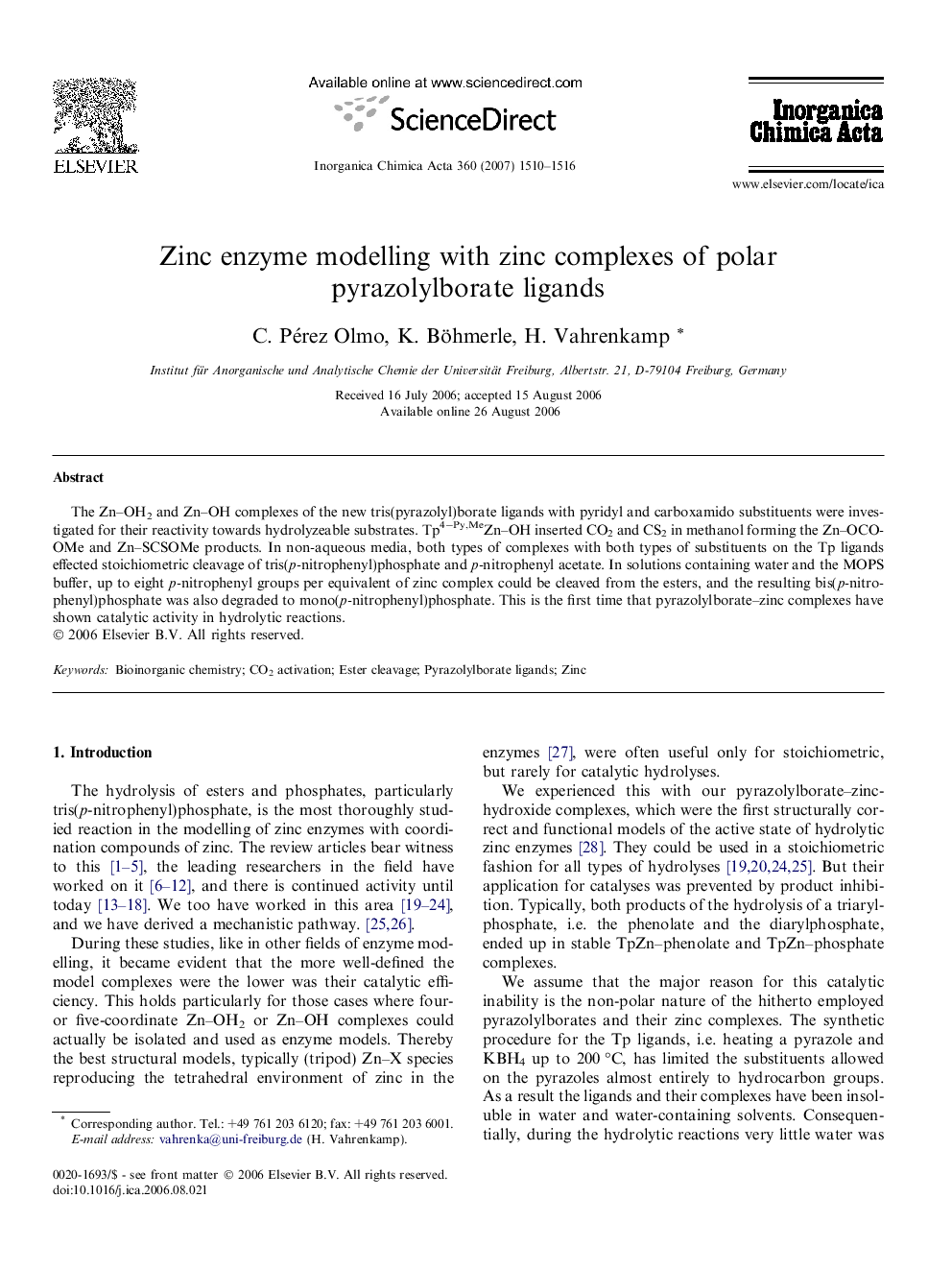| Article ID | Journal | Published Year | Pages | File Type |
|---|---|---|---|---|
| 1311670 | Inorganica Chimica Acta | 2007 | 7 Pages |
The Zn–OH2 and Zn–OH complexes of the new tris(pyrazolyl)borate ligands with pyridyl and carboxamido substituents were investigated for their reactivity towards hydrolyzeable substrates. Tp4−Py,MeZn–OH inserted CO2 and CS2 in methanol forming the Zn–OCOOMe and Zn–SCSOMe products. In non-aqueous media, both types of complexes with both types of substituents on the Tp ligands effected stoichiometric cleavage of tris(p-nitrophenyl)phosphate and p-nitrophenyl acetate. In solutions containing water and the MOPS buffer, up to eight p-nitrophenyl groups per equivalent of zinc complex could be cleaved from the esters, and the resulting bis(p-nitrophenyl)phosphate was also degraded to mono(p-nitrophenyl)phosphate. This is the first time that pyrazolylborate–zinc complexes have shown catalytic activity in hydrolytic reactions.
Graphical abstractThe Zn–OH2 and Zn–OH complexes of the new tris(pyrazolyl)borate ligands with pyridyl and carboxamido substituents insert CO2 and CS2, and they hydrolyze p-nitrophenyl acetate and tris(p-nitrophenyl)phosphate. They are the first pyrazolylborate–zinc complexes which show catalytic activity in hydrolytic reactions.Figure optionsDownload full-size imageDownload as PowerPoint slide
